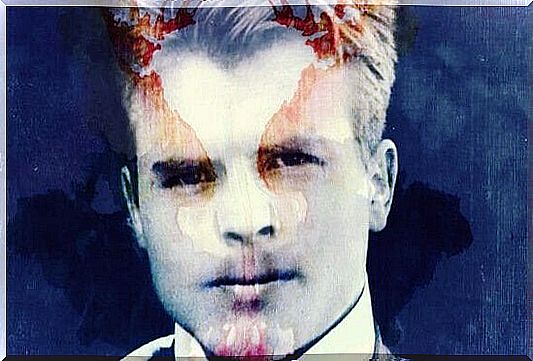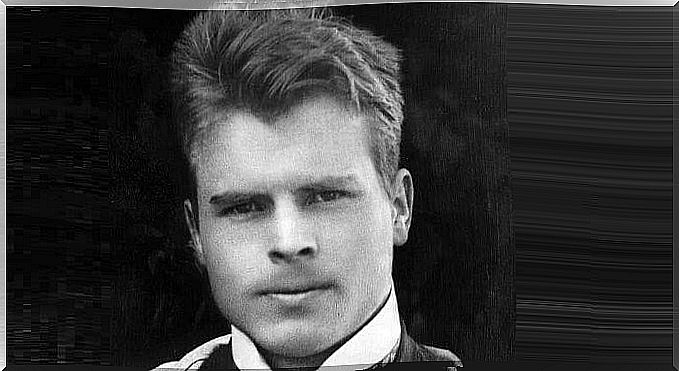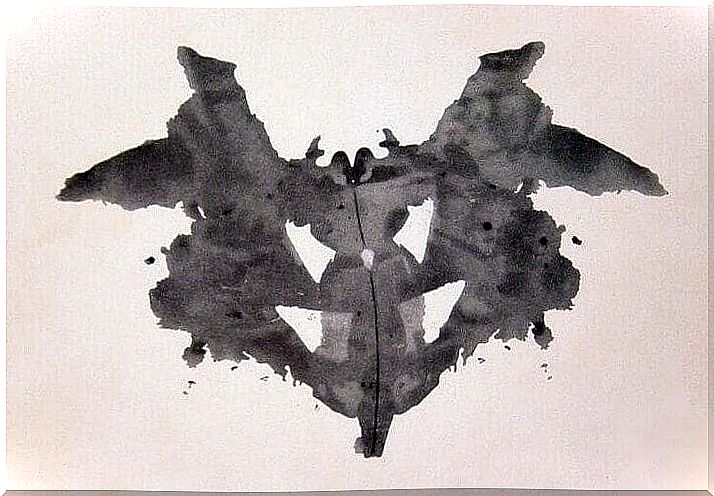The Interesting Life Of Hermann Rorschach

Hermann Rorschach was a physician and psychiatrist who belonged to the first generation of Freudian psychoanalysts in history. He became famous around the world for the famous test that bears his surname: the Rorschach test, better known as the spot test.
He was born in Zurich, Switzerland, in the year 1884. He came from a humble family, his father was a modest painter who earned his living by giving private art lessons. Hermann Rorschach also showed great interest in drawing from a very young age. He mainly liked a drawing technique called flexography.
Hermann Rorschach was addicted to a game of filling a paper with ink and then folding it. In this way, he achieved unique and amusing figures. For that reason, his own friends gave him an almost premonitory nickname: Klek. Klek means “stain”.

Hermann Rorschach, physician and psychiatrist
Hermann Rorschach found it difficult to choose the profession he wanted to pursue. Interested in biology as well as art, he ended up deciding to study medicine. He graduated in 1909, and immediately chose to specialize in psychiatry.
During the development of his studies in psychiatry, he had very prestigious psychoanalysts as professors, such as Eugen Bleuler and Carl Gustav Jung. Hermann Rorschach was enthusiastic about psychoanalytic ideas and never abandoned them. He was particularly interested in the subject of diagnosis. It was he who coined the word “psychodiagnostic”.
Later in his life he became a doctor in several hospital centers. He became a director of nursing homes and had extensive clinical experience that served as the basis for designing his famous test.
During those years he read The Novel by Leonardo da Vinci , a work by Dmitri Merejkovski that was published in St. Petersburg in 1902. A passage from the book caught his attention. One of the characters, Giovanni Boltraffio, traced damp patches on an old wall with his finger. The text said: “Often on the walls – it said – in the middle of the rocks, between the cracks, in the mold drawings of the backwater […], I found similarities with wonderful places, with mountains, with steep peaks, etc.”
The Rorschach Test
Hermann Rorschach’s life was short. He died young, at just 38 years old. During the last three years of his life, he wrote the work that is still being studied so many years later. Its name is Psychodiagnostic and it was published in 1921. In it, Rorschach defined the foundations of his test, which he called a projective test. He explained that his purpose was to explore people’s imaginary representations, asking them to verbally express the associations they made with the drawings that were shown.

Before that, Rorschach had studied in detail the mechanisms of dreams, delusions and hallucinations. Despite having always been a follower of Freud, one can clearly see a Jungian influence in his concepts and in his language. He sought the inner images and marks of civilization in his patients’ responses.
For the test, he gathered 40 images that are, at first glance, just smudges. The patient looks at them and says what he can identify in the drawing. In fact, when the Rorschach test is applied, only 15 of these images are used today. In his day, the main objective was to determine whether patients were neurotic or psychotic, psychoanalytic concepts that dominated psychiatric medicine until then.

Rorschach’s legacy
The Rorschach test is one of the most used diagnostic tools in clinical psychology. Currently, it is not only used to determine whether a patient is neurotic or psychotic, but has other multiple applications. These range from identifying the main personality traits to assessing professional vocation.
This test is also widely used in the forensic field. This is because some experts who defend the value of the test believe in the idea that the interpretation of the slides escapes rational control. Therefore, people who take the test would hardly be able to manipulate the results. In this way, the Rorschach test would reveal deep aspects of the personality and, therefore, it is still used almost 100 years after its creation.
Hermann Rorschach made great contributions to psychology and psychoanalysis. Somehow his work was incomplete, as his death took him by surprise during the development of his technique. Still, it became a landmark, creating a before-and-after split in the investigation of the human mind.









